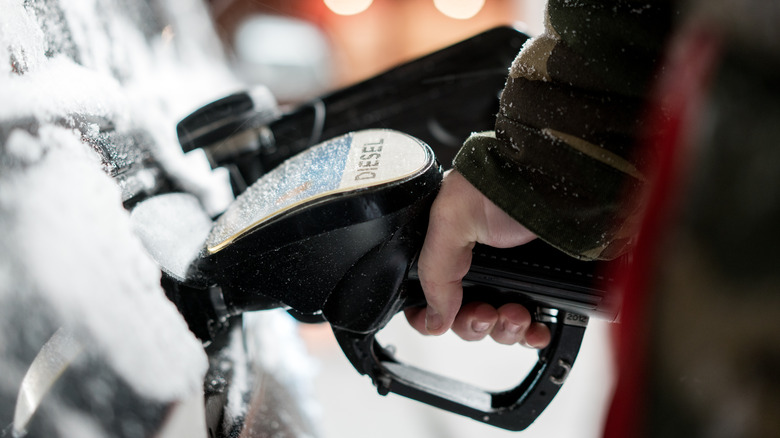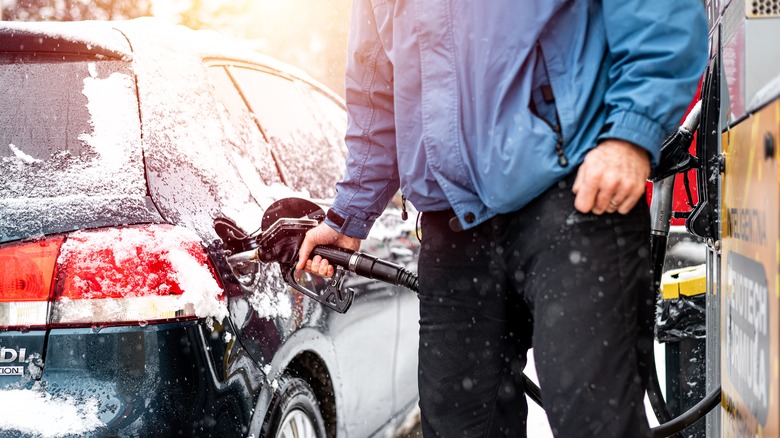What Is Winter Diesel Fuel And When Is It Available?
Over the years, it has been argued that diesel fuel is, in many ways, superior to ordinary gasoline, as it can boost both a vehicle's fuel economy and its power output. But there are reasons that most vehicles are built to run on gasoline. First and foremost, diesel tends to be slightly more expensive than normal gasoline, but it can also go bad if not properly maintained. As we learned from Volkswagen's infamous Dieselgate debacle, the nitrogen-oxide-producing fuel can also be damaging to human health and the environment.
Diesel fuel is also susceptible to cold weather. So much so that it may experience gelling — the build-up of wax particles in cold weather that essentially allows the fuel to freeze — when exposed to freezing temperatures for extended periods of time. The issue can, understandably, be damaging to diesel vehicles in areas that endure prolonged stretches of freezing weather. There is, however, a solution to the issue: winter diesel, which was developed to ensure the fuel does not freeze when it's cold outside.
Winter diesel is able to resist gelling because it's formulated with additives that ensure wax crystals do not form in freezing temperatures. Though winter diesel is okay to use any time of year, you can't actually buy it year-round. Here's when you can expect to start seeing winter diesel at your local filling station.
Winter Diesel is typically available through cold weather months
Given the sheer existence of winter diesel, you might have already guessed that there is also a higher viscosity warm weather counterpart called summer diesel, which is used during warm weather months. Unlike its cold weather counterpart, summer diesel is not ideal for use year-round due to its susceptibility to gelling during cold snaps. While it might seem obvious to merely phase out summer diesel, oil companies are hesitant to do so. Summer diesel is cheaper to make than winter diesel since considerably less of the latter is produced during the refining process.
Whatever the case, given its potential for gelling in freezing temperatures, the general rule of thumb is that owners of diesel-powered vehicles should completely drain summer diesel from their fuel tanks before making the switch to the winterized version. If you're considering just merely mixing winter diesel with whatever summer diesel is left in your tank when the weather turns, know that even small amounts of non-winterized diesel may dilute the mix enough that gelling can occur. As for when you need to make the switch from summer to winter diesel, the latter usually starts showing up at gas stations sometime in November.
Mid-November is indeed typically when I start seeing winter diesel in my Mid-Atlantic East Coast city. However, the dates may swing one way or the other depending on where you are in the world. For instance, some arctic climates may make the switch to winter diesel a little earlier, while warmer areas may do so later. Whatever the case, winter diesel is usually available at filling stations until sometime in March.

